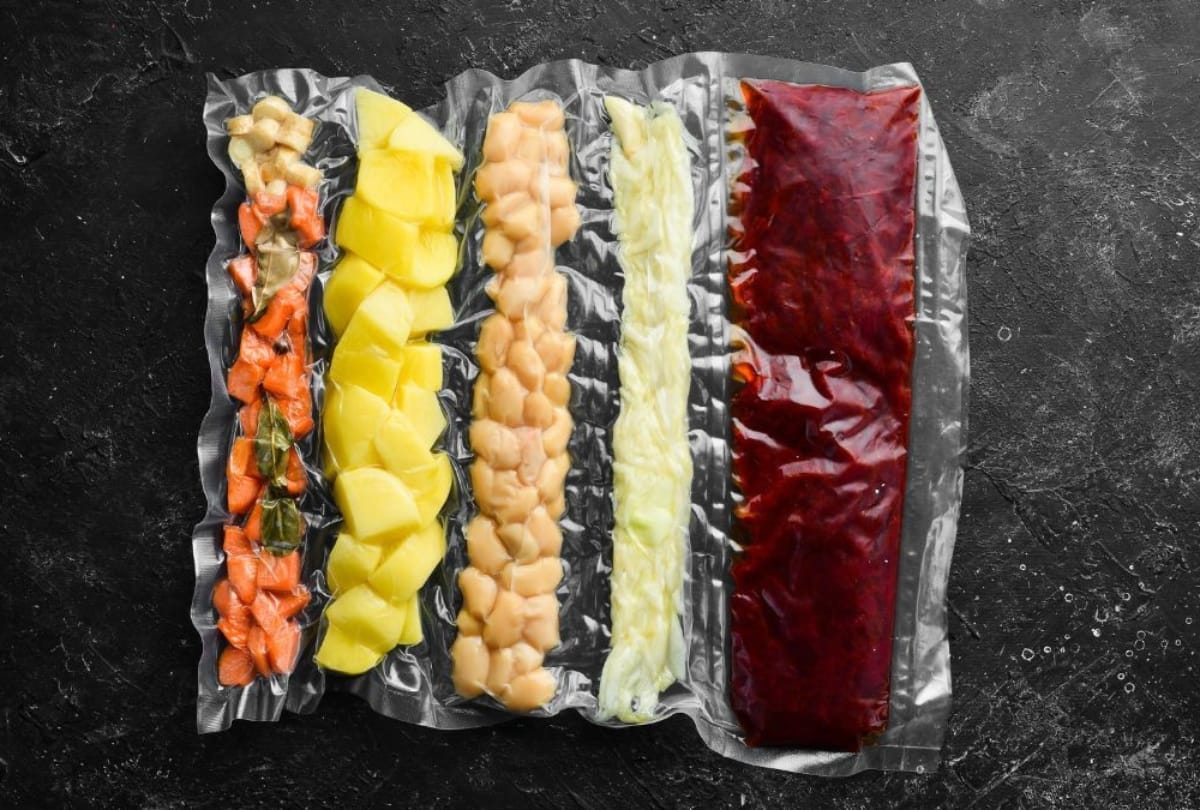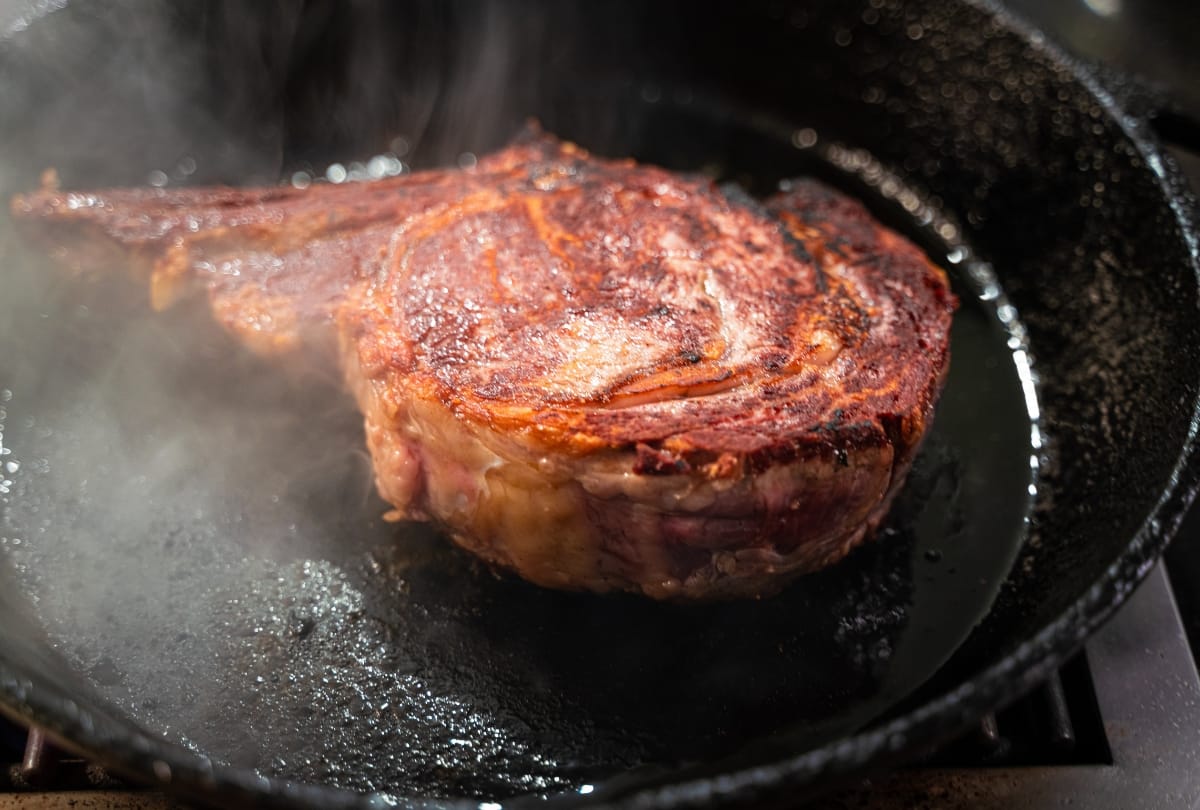Vacuum-sealing food is becoming increasingly common in kitchens. Vacuuming allows you to store food more efficiently and for longer. It's a handy way to prevent food waste, and it's also good for the environment and your wallet.
You'll be amazed at how many different types of food can be vacuum-sealed. And did you know that vacuum packaging isn't limited to solid foods; moist and even liquid foods can also be vacuum-sealed?
You might be wondering how moist foods can be vacuum-sealed and why you'd go to all that trouble. But trust us, once you're familiar with this kitchen hack, you'll never store your homemade soups, marinades, and other moist foods any other way again.
So, get rid of that hodgepodge of containers in the refrigerator and freezer, and from now on, just vacuum-seal moist food as well.
How can you vacuum pack liquid products?
First of all, don't make the mistake of not allowing your freshly prepared food to cool sufficiently before using the vacuum sealer. Vacuuming food while it's still warm creates a healthy environment for bacteria. This will cause the food to spoil quickly, compromising food safety. Furthermore, you run the risk of the vacuum bag tearing open, as steam from the warm contents can't escape from the sealed bag. So, cool your food down first.
Only then can you vacuum-seal moist food properly and safely. And you can do this in five different ways .
4 Ways to Vacuum Seal Moist Food
Method 1: Freeze first, then vacuum seal
The easiest way to vacuum-pack liquid products is to freeze them first . For example, you can pour soup into an ice cube tray first, and then place the cubes in the vacuum bag.
Alternatively, you can place the empty vacuum bag in a container and then fill the bag. Place the container with the filled vacuum bag in the freezer for a few hours until the contents are frozen. The bag can then be removed from the container and vacuum-sealed.
The downside of this method is that it's obviously extra work and takes more time. Moreover, food isn't always meant to be frozen. Sometimes you simply want to store it in the refrigerator, or you want to cook it directly in the sous vide. Fortunately, there are other (and better) options for vacuum-sealing wet preparations and foods.

Method 2: Use the pulse button on your vacuum sealer
Better vacuum sealers are equipped with a pulse button that allows you to manually control the vacuum. This is not only useful when sealing food that can easily be crushed by the vacuum sealer's force, but also ideal for preventing moist food from being sucked into the sealer during the vacuum sealing process.
Vacuum-sealing liquid food is easy this way. Let your prepared sauce, soup, or other meal cool down sufficiently first. Place the desired amount in the vacuum bag (pro tip: portion it out immediately) . Place the bag correctly in the appliance and use the pulse button to extract the air from the plastic bag. Stop vacuuming before the liquid reaches the seal. Then seal the bag completely, and you're done.
Method 3: With a professional chamber vacuum device
Vacuum like a pro with a chamber vacuum sealer. These are professional vacuum sealers into which the entire vacuum bag is placed.
For simple home use, these professional vacuum sealers might be a bit much. However, if you regularly vacuum seal a lot of moist food, or perhaps even run a (small) business, it can certainly be worthwhile to invest in a good vacuum sealer with a chamber . Vacuuming moist food is quick with such a vacuum sealer, and it's ultimately more cost-effective because you can use regular (and therefore inexpensive) vacuum bags.
A major difference from a 'regular' vacuum sealer is that the air isn't sucked out of the bag, but rather the air pressure in the vacuum chamber is manipulated. The advantage of this is that the liquid isn't sucked out of the bag by the machine, but remains there. This model is an example of a chamber vacuum sealer!

Method 4: Use gravity
Hang the vacuum bag over the edge of the countertop or worktop, or simply place the vacuum sealer on a raised surface. The latter option is much more convenient, as otherwise you'll have to hold the vacuum bag containing the liquid securely with one hand while clamping the bag between the vacuum sealer and operating it with the other.
With this approach, we're essentially tricking the vacuum sealer. It appears as if there's no liquid inside the vacuum bag, because the liquid inside the bag is lower than the vacuum sealer, and gravity does the rest.
At the end, just before the machine seals the bag, some liquid may escape. So, monitor the process closely and, if necessary, press the seal button on the vacuum sealer in time to seal the bag immediately.
If any liquid does get into the seal, the bag might not be properly sealed. This is problematic, as air will eventually get into the vacuum bag. Air not only affects the shelf life of your product, but a poor seal also allows water to enter the bag during sous-vide cooking.
What can you vacuum seal this way?
Using the methods we described above, you can now vacuum pack the following moist foods without any problems.
- Soups
- Marinades
- Sauces and dips
- Drinks, such as smoothies or fruit juices
- Preparations of meat or fish with sauce, such as stew or coq au vin
- Meat or fish with marinades



Leave a comment
This site is protected by hCaptcha and the hCaptcha Privacy Policy and Terms of Service apply.